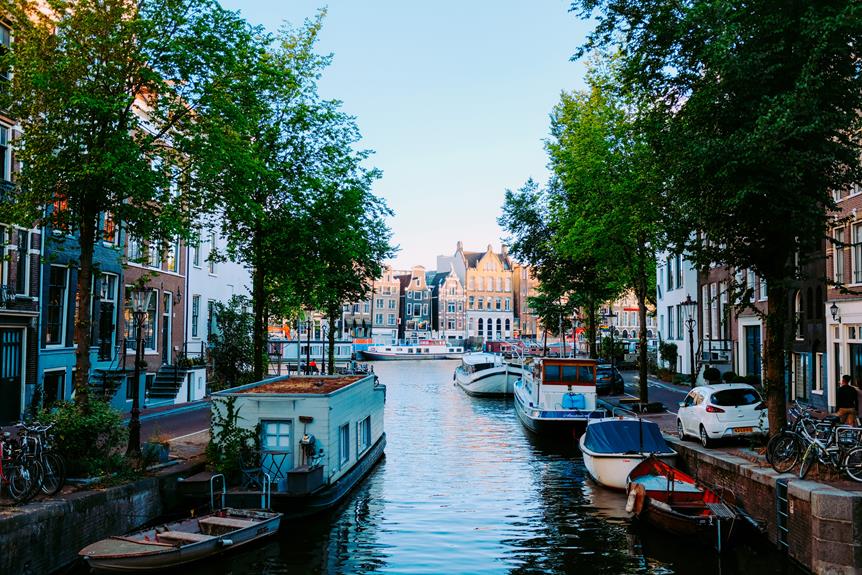Nestled in the heart of the Chittagong Division in Bangladesh, Rangamati Hill District beckons adventurous souls with its captivating allure and natural grandeur. This district, with its unique distinction of sharing international borders with both India and Myanmar, boasts a wealth of breathtaking beauty that is waiting to be explored. From the enchanting Kaptai Lake that invites visitors to embark on a voyage of serenity, to the picturesque waterfalls that cascade in all their glory, Rangamati Hill District promises a sensory experience like no other. Its diverse indigenous communities and thriving cottage industries add depth to the cultural tapestry of the region, captivating the imagination of those who yearn to unravel its secrets. As we embark on this journey, let us uncover the hidden treasures that lie within the breathtaking beauty of Rangamati Hill District.
Geographic Location and International Borders
Located in the Chittagong Division of Bangladesh, Rangamati Hill District stands as a captivating region with its breathtaking beauty and unique geographic location. What makes Rangamati even more intriguing is its international borders with two countries: India and Myanmar. This geographic location not only adds to the district's charm but also opens up avenues for various economic activities. Rangamati's proximity to India and Myanmar allows for cross-border trade and cultural exchanges, contributing to the district's economic growth. Additionally, the district's rich natural resources, including fertile lands for agriculture and abundant forests, provide opportunities for industries such as farming, forestry, and cottage industries. Rangamati's geographic location, coupled with its economic activities, makes it a region of immense potential and allure.
Rich History and Cultural Heritage
With a rich history dating back to the Mughal Empire and a vibrant cultural heritage, Rangamati Hill District is a treasure trove of stories and traditions waiting to be explored. The district is home to numerous archaeological sites that offer a glimpse into the past and showcase the cultural traditions of the region. Here are four notable sites to visit:
- Rajban Bihar Pagoda: This ancient Buddhist temple is a significant pilgrimage site for Buddhists. It houses relics and statues that reflect the religious and artistic heritage of the area.
- Chakma Rajbari: The former palace of the Chakma kings, this grand structure is a testament to the rich history of the Chakma dynasty. It showcases the architectural style and cultural practices of the Chakma community.
- Mainimati Ruins: Located in the nearby Comilla district, these ruins provide a window into the ancient history of the region. The site features Buddhist monasteries, stupas, and sculptures, offering a glimpse into the glorious past.
- Kaptai Archaeological Museum: Situated near the Kaptai Lake, this museum houses a collection of artifacts and exhibits that highlight the cultural heritage of the indigenous communities in Rangamati. It is a must-visit for history enthusiasts and those interested in the local traditions.
Exploring these archaeological sites will allow visitors to delve into the rich history and cultural traditions of Rangamati Hill District, making for a truly immersive experience.
Demographic Composition and Religious Diversity
The demographic composition of Rangamati Hill District in Bangladesh is characterized by a diverse population and a rich religious tapestry. The district is home to various indigenous communities, each with their unique customs and traditions. To better understand the religious diversity in Rangamati, let's take a look at the following table:
| Religion | Percentage |
|---|---|
| Buddhists | 57.25% |
| Muslims | 36.22% |
| Hindus | 5.1% |
| Christians | 1.32% |
| Others | 0.11% |
Despite the differences in religious beliefs, Rangamati exemplifies religious harmony, where people from different faiths coexist peacefully. The indigenous communities play a significant role in maintaining this harmony, as they embrace their own customs while respecting the beliefs of others. This cultural tapestry adds to the charm of Rangamati, making it a truly unique and inclusive destination.
Administration and Educational Institutions
Rangamati Hill District, with its diverse demographic composition and religious harmony, is also known for its efficient administration and wide range of educational institutions. The district administration of Rangamati is headed by the Deputy Commissioner or District Magistrate, Md. Shamsul Arefin. The administration is responsible for maintaining law and order, providing public services, and ensuring the smooth functioning of the district. In terms of education, Rangamati boasts a comprehensive education system that includes government and non-government primary schools, high schools, colleges, madrasas, technical schools, and even a medical college and a science and technology university. These institutions play a vital role in providing quality education and shaping the future of the students in the district. With a strong administration and a wide range of educational institutions, Rangamati Hill District is truly a hub of knowledge and development.
Subdistricts and Economic Activities
Located in the Chittagong Division, the mesmerizing Rangamati Hill District is a vibrant region bustling with diverse subdistricts and a wide range of economic activities. With its stunning natural landscapes and rich cultural heritage, Rangamati has immense tourism potential. The district is home to the famous Kaptai Lake, a popular tourist attraction offering opportunities for boating and exploring tribal culture. In addition to tourism, the economy of Rangamati is largely dependent on agriculture, with a significant portion of the population engaged in this sector. The cultivation of food and non-food crops is a prominent activity, along with cottage industries such as weaving and woodwork. Major industries like the Chandraghona paper and rayon mill and the Plywood Factory contribute to the economic development of the region. With its diverse economic activities and breathtaking beauty, Rangamati Hill District is truly a treasure to be explored.
Kaptai Lake: a Man-Made Wonder
Nestled amidst the captivating landscapes of the Rangamati Hill District, Kaptai Lake stands as a remarkable testament to human ingenuity and the harmonious coexistence of nature and engineering. This man-made wonder is a must-visit destination for those seeking to explore the beauty of Rangamati. Here are four reasons why Kaptai Lake is a true gem:
- Ecotourism opportunities: Kaptai Lake offers a plethora of ecotourism opportunities, allowing visitors to immerse themselves in the natural wonders of the region. From boat rides on the tranquil waters to hiking along the scenic trails surrounding the lake, nature enthusiasts will be spoiled for choice.
- Cultural festivals and traditions: The Rangamati Hill District is known for its rich cultural heritage, and Kaptai Lake serves as a backdrop to various cultural festivals and traditions. Visitors can witness vibrant celebrations, traditional music and dance performances, and indulge in the local cuisine, providing a unique cultural experience.
- Serene beauty: The lake's serene beauty is truly mesmerizing. Surrounded by lush green hills and dotted with floating islands, Kaptai Lake offers a tranquil escape from the hustle and bustle of city life. The breathtaking views and calm ambiance make it an ideal spot for relaxation and rejuvenation.
- Wildlife and biodiversity: Kaptai Lake is home to a diverse range of flora and fauna. The surrounding forests and water bodies support a thriving ecosystem, making it a haven for wildlife enthusiasts and birdwatchers. Exploring the lake and its surroundings provides an opportunity to encounter unique species and appreciate the wonders of nature.
Kaptai Lake is not only a man-made wonder but also a gateway to the natural and cultural treasures of the Rangamati Hill District.
Sajek Valley: a Hidden Gem in the Hills
Tucked away amidst the enchanting hills of the Rangamati Hill District, lies Sajek Valley, a true hidden gem waiting to be discovered. Known for its breathtaking natural beauty, Sajek Valley offers immense ecotourism potential, attracting nature enthusiasts from far and wide. This picturesque valley is home to lush green mountains, majestic waterfalls, and meandering rivers, creating a serene and tranquil atmosphere.
To truly experience the essence of Sajek Valley, visitors have the opportunity to immerse themselves in the rich traditions of the local tribes. The valley is inhabited by various indigenous communities, such as the Chakma, Marma, Tanchangya, and Tripuri, who have preserved their unique cultures and customs for generations. From colorful traditional attire to vibrant folk dances, the local tribes offer a glimpse into their fascinating way of life.
To provide a clearer picture of the attractions in Sajek Valley, here is a table highlighting some of the key features:
| Features | Description |
|---|---|
| Lush Green Mountains | Towering mountains covered in verdant greenery, offering breathtaking views |
| Majestic Waterfalls | Cascading waterfalls that create a soothing ambiance, perfect for relaxation |
| Meandering Rivers | Serene rivers flowing through the valley, providing opportunities for boating and fishing |
| Indigenous Communities | Local tribes preserving their traditions and culture, offering insights into their way of life |
| Traditional Attire | Colorful and intricately designed clothing worn by the indigenous communities |
| Folk Dances | Energetic and captivating dances performed by the local tribes, showcasing their cultural heritage |
Sajek Valley truly exemplifies the beauty and diversity of the Rangamati Hill District. With its ecotourism potential and the chance to witness the vibrant traditions of the local tribes, this hidden gem is a must-visit destination for those seeking an unforgettable experience in the hills.
The Iconic Hanging Bridge of Rangamati
The Hanging Bridge in Rangamati, known as Jhulonto Bridge, stands as a remarkable landmark and a testament to the engineering marvels of the region. This iconic bridge holds great architectural significance and has had a significant impact on tourism in Rangamati. Here are four key points to understand its importance:
- Architectural Significance: The Hanging Bridge showcases the ingenuity of its creators. Its design, with steel cables suspending the bridge from towering pillars, is a stunning example of modern engineering. The bridge's sturdy structure allows it to withstand the weight of pedestrians and vehicles, providing a safe and reliable passage across Kaptai Lake.
- Tourism Boost: The presence of the Hanging Bridge has attracted tourists from far and wide. Visitors are drawn to its breathtaking views and the thrill of crossing the bridge suspended high above the water. The bridge has become a popular spot for photography, providing stunning panoramas of the surrounding natural beauty.
- Cultural Experience: The Hanging Bridge offers more than just scenic beauty. It also provides an opportunity to immerse oneself in the local culture. As tourists traverse the bridge, they can interact with the friendly locals, who often sell handicrafts and traditional snacks nearby. This exchange of customs and traditions enhances the overall tourism experience.
- Economic Development: The tourism industry in Rangamati has flourished with the presence of the Hanging Bridge. Local businesses, such as hotels, restaurants, and souvenir shops, have seen a boost in revenue. The increased footfall has created employment opportunities for the local community, contributing to the overall economic growth of the region.
The Hanging Bridge in Rangamati stands as a symbol of architectural brilliance, attracting tourists and boosting the local economy. Its grandeur and impact on tourism make it a must-visit destination for anyone exploring the breathtaking beauty of Rangamati Hill District.
Explore the Majestic Kaptai National Park
Continuing our exploration of the natural wonders in Rangamati Hill District, we now turn our attention to the majestic Kaptai National Park, a sanctuary of breathtaking beauty and diverse wildlife. Established in 1999, this park covers an area of 5,464.78 hectares and is situated between the Karnaphuly and Kaptai Mountain ranges. Kaptai National Park is not only a haven for wildlife, but also a testament to Bangladesh's wildlife conservation efforts. Visitors to the park can spot various species such as deer, jungle cats, elephants, and monkeys, as well as a wide array of bird species. In addition to its natural splendor, the park offers a glimpse into the local culture through its promotion of traditional crafts and the opportunity to sample the delicious local cuisine. A visit to Kaptai National Park is a must for nature enthusiasts and those seeking an immersive experience in Rangamati Hill District.
Shuvolong Waterfall: Nature's Breathtaking Beauty
Nestled amidst the lush greenery of Rangamati Hill District, Shuvolong Waterfall stands as a mesmerizing testament to the awe-inspiring beauty of nature. This hidden gem is a must-visit for nature enthusiasts and adventure seekers alike. Here are four reasons why Shuvolong Waterfall is a true marvel:
- Breathtaking waterfalls: Shuvolong boasts a series of cascading waterfalls, with the largest one plunging from a staggering height of 300 feet. The sight and sound of the rushing water create a captivating and serene atmosphere.
- Hidden treasures: The surrounding area of Shuvolong Waterfall is a treasure trove of natural wonders. From enchanting forests to serene streams, this picturesque landscape offers a tranquil escape from the hustle and bustle of everyday life.
- Tribal culture: As you explore Shuvolong, you will have the opportunity to interact with the indigenous communities that call this place home. Immerse yourself in their rich traditions and learn about their ancient way of life, passed down through generations.
- Nature's playground: Shuvolong Waterfall is not just a sight to behold, but also a playground for outdoor enthusiasts. Take a refreshing dip in the crystal-clear waters, go for a hike along the scenic trails, or simply bask in the beauty of nature.
Shuvolong Waterfall is a true masterpiece of nature, a hidden treasure waiting to be discovered. Plan your visit to this breathtaking destination and immerse yourself in the wonders of Rangamati Hill District.
Frequently Asked Questions
What Is the Political Structure of Rangamati Hill District?
Rangamati Hill District has a well-defined political structure and administrative setup. The district falls under the charge of a district officer, known as the Deputy Commissioner or District Collector or District Magistrate. The current Deputy Commissioner and District Magistrate of Rangamati is Md. Shamsul Arefin. The district also has a Zila Porishod, with Brisketu Chakma serving as the Chairman. The Chakma King, Debashish Roy, holds a significant position within the political framework of the district. The political structure ensures effective governance and administration in Rangamati Hill District.
How Has the Population of Rangamati Changed Over the Years?
The population of Rangamati Hill District has experienced significant changes over the years. There has been steady population growth, with an increase in both urban and rural areas. According to the 2022 Census of Bangladesh, the district's population was 647,587, with 47.6% living in urban areas. The demographic composition of the district is diverse, with a mix of Bengalis and indigenous communities. The district has witnessed a rise in literacy rates, with a current rate of 71.3%. These demographic changes reflect the evolving dynamics of Rangamati's population.
What Are the Main Economic Activities in Rangamati?
The main economic activities in Rangamati Hill District revolve around agriculture, with a significant portion of the population engaged in farming and cultivating food and non-food crops. However, local businesses face challenges such as limited access to markets, inadequate infrastructure, and a lack of technical skills. To address these issues, various initiatives for economic development have been undertaken, including the promotion of cottage industries, investment in infrastructure development, and the establishment of vocational training centers to enhance the skill set of the local workforce.
Are There Any Famous Landmarks or Tourist Attractions in Rangamati Besides Kaptai Lake and Sajek Valley?
There are several famous landmarks and tourist attractions in Rangamati besides Kaptai Lake and Sajek Valley. One of the notable landmarks is the Hanging Bridge, also known as Jhulonto Bridge, which stands at a height of 335 feet and serves as a link to the lake. Additionally, tourists can explore the beautiful Shuvolong Waterfall, visit the Rajban Bihar Pagoda, and experience the rich tribal culture of the region. Rangamati offers a range of activities such as boating, hiking, and immersing oneself in the breathtaking natural beauty of the district.
How Can Visitors Access Shuvolong Waterfall From Rangamati?
Visitors can access Shuvolong Waterfall from Rangamati by taking a speed boat or motor boat. Located about 25 kilometers away from Rangamati town, Shuvolong features several waterfalls, with the largest one falling from a height of 300 feet. In recent years, Shuvolong has become a popular tourist destination due to its scenic beauty and nearby market. The journey to Shuvolong offers a chance to enjoy the picturesque landscape and experience the mesmerizing beauty of Rangamati Hill District.





